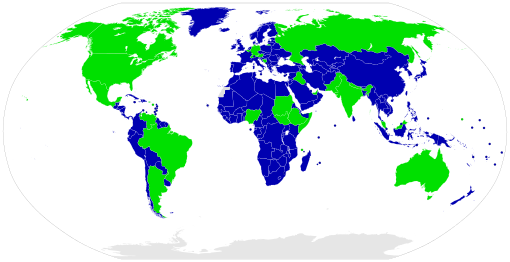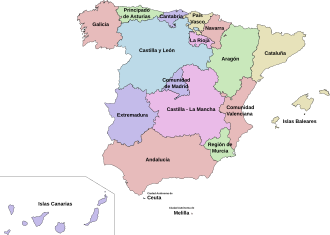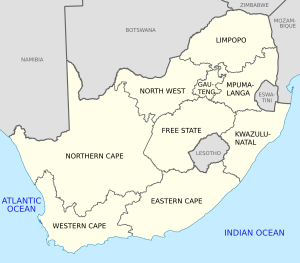Federation facts for kids
A federation is a type of country where power is shared. It's like a team where a main, central government works with smaller, self-governing parts. These smaller parts can be called states, provinces, or regions.
In a federation, the way power is shared is usually written down. This is in a special rule book called a constitution. This means neither the central government nor the smaller states can easily change how power is divided. They can't do it alone.
Imagine a country where the main government handles big things. These might be like national defense or making deals with other countries. But the local governments (like states) handle things closer to home. This could be schools or local roads. This system is called federalism.
Some countries that are federations include Germany, with its 16 states, and Nigeria, with 36 states. Many federations are very large, like Russia, the United States, Canada, India, and Brazil. They often have many different groups of people living in them. About 40% of all people in the world live in a federation.
How Federations Started
Many years ago, some groups of people formed early versions of federations. For example, the Iroquois Confederacy in North America was a group of Native American nations. They worked together on common goals. The Old Swiss Confederacy was another early example.
In the New World (like North and South America), many colonies became federations after they gained independence. The United States is one example. It became a federation in 1789. It is the oldest federation that is still around today. Some early federations, like the Federal Republic of Central America, did not last very long.
Australia and Canada also became federations. They did this while they were still part of the British Empire. Over time, they became fully independent countries.
Germany has changed its government style many times. It has been a federation, a group of states, and a single strong state. The German Empire and the Weimar Republic were both federations.
Countries like India, Pakistan, and Malaysia became federations when they gained independence from the British Empire. More recently, some countries like Bosnia and Herzegovina and Iraq became federations. They did this to help manage conflicts between different groups of people. The newest federation is Nepal, which became one in 2015.
Federations and Other Countries
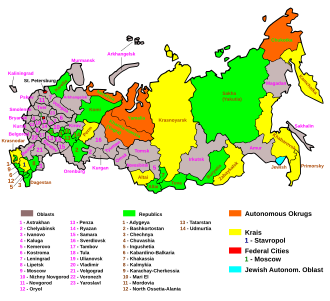
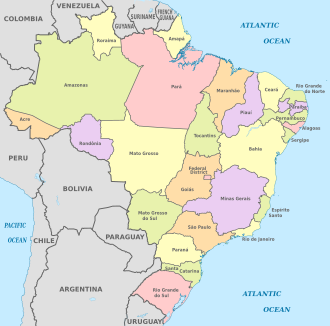
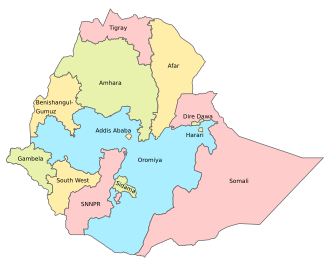
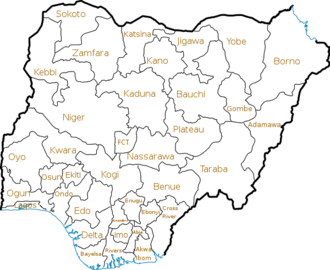
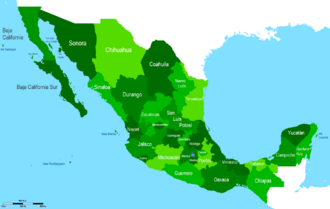
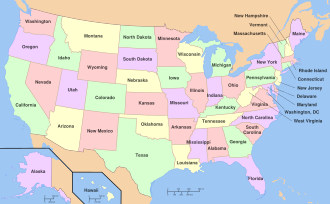
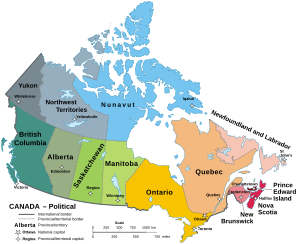
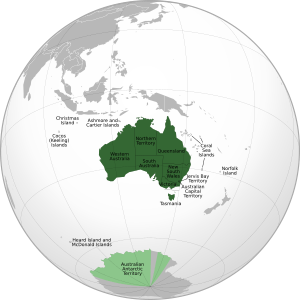

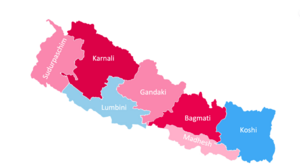

What Makes a Federation Special?
In a federation, the smaller states have their own powers. The central government cannot take these powers away easily. However, these states usually don't handle foreign policy. They don't act as independent countries on the world stage.
Some federations are called asymmetric. This means some states have more power or freedom than others. Malaysia is an example. Some of its states joined the federation with different rules.
Federations often start when several separate states decide to join together. They might do this to solve problems or to protect each other. The United States and Switzerland are examples of this. But each country's history is different. For instance, Australia became a nation when its citizens voted to join together. Brazil has been both a federation and a single strong state in its history.
Seven of the eight largest countries in the world are federations.
Unitary States: A Different Way
A unitary state is different from a federation. In a unitary state, the central government holds most of the power. It can create or remove self-governing regions. It can also change their powers whenever it wants.
Think of it this way: Federations often form when states agree to join "from below." Unitary states might give some power to regions "from above." This is called devolution. But the central government can always take that power back.
Confederations: A Loose Union

A confederation is a very loose group of independent states. They join together for specific reasons, like working together on foreign policy. The European Union is the closest thing to a confederation today.
The early United States, under the Articles of Confederation, was a confederation. The states had a lot more power than the central government. Over time, the US became a stronger federation.
In a confederation, decisions are often made by all members agreeing. It's not usually a simple majority vote. Also, changing the rules of a confederation usually needs everyone to agree.
Empires: Power from the Top
An empire is a large state that often includes many different groups of people or nations. It's usually formed when a strong central government takes control, sometimes by force. In an empire, any self-governing regions only have power because the central government allows it. The central government can take that power away at any time.
For example, the German Empire (1871–1918) was an empire. But it also had several smaller kingdoms that were organized like a federation.
Countries That Act Like Federations
Sometimes, a country might officially be a unitary state. But in practice, it acts a lot like a federation. This happens when its self-governing regions have a lot of power. It might be very hard for the central government to take that power away. These are sometimes called de facto federations or "quasi-federations."
Spain
Spain is often seen as a de facto federation. Its autonomous communities have a lot of self-government. For example, Catalonia and the Basque Country have significant control over their own affairs. Even though the Spanish parliament could legally take away their power, it would be very difficult politically. Some regions, like Navarre, even control their own taxes.
South Africa
South Africa also has some features of a federal system. Its provinces have certain powers. The country's constitution protects these powers. This means the central government cannot easily change them on its own.
European Union
The European Union (EU) is a special case. It's not exactly a country, but it's more than just a group of independent states. Some experts say it's becoming like a federation. The EU handles important areas like trade and money. However, its member countries still control their own foreign policy and defense. They can also leave the EU if they choose.
China
The People's Republic of China is officially a unitary state. But its special administrative regions like Hong Kong and Macau have a lot of freedom. Also, the provinces have gained more power over economic matters. Some people call this "federalism with Chinese characteristics."
Myanmar
Myanmar is also officially a unitary state. But its administrative divisions have their own cabinets and chief ministers. This makes it act more like a federation in practice.
Federal Governments
A federal government is the main government of a federation. It has specific powers given to it by the country's constitution. These powers are usually for the whole country.
The federal government is responsible for things like national security and dealing with other countries. In the United States, the Constitution was first written to limit the federal government's power. But later changes to the Constitution gave the federal government more authority over the states.
Current Federations
As of 2025, there are 26 federations around the world. Six are in Asia, six in Europe, five in Africa, four in North America, three in South America, and two in Oceania.
| Year Started | Federation | Type (R=Republic, M=Monarchy) |
Government Style | Main Divisions | Number of Main Federated Units | Other Units |
|---|---|---|---|---|---|---|
| 1853 | R | Presidential | Provinces of Argentina | 23 provinces | 1 autonomous city | |
| 1901 | M | Parliamentary | States and territories of Australia | 6 states | 3 internal territories and 7 external territories | |
| 1920 | R | Parliamentary | States of Austria | 9 states (Länder) | ||
| 1993 | M | Parliamentary | Divisions of Belgium | 3 communities, 3 regions | 3 commissions | |
| 1995 | R | Parliamentary | Divisions of Bosnia and Herzegovina | 2 entities | 1 district | |
| 1889 | R | Presidential | Federative units of Brazil | 27 federative units (states and federal district) | 5,569 municipalities | |
| 1867 | M | Parliamentary | Provinces and territories of Canada | 10 provinces | 3 territories | |
| 1995 | R | Parliamentary | Regions and chartered cities of Ethiopia | 12 regions | 2 chartered cities | |
| 1949 | R | Parliamentary | States of Germany | 16 states (Länder) | ||
| 1947 | R | Parliamentary | States and union territories of India | 28 states | 8 union territories | |
| 2005 | R | Parliamentary | Governorates of Iraq | 19 provinces | ||
| 1963 | M | Parliamentary | States of Malaysia | 13 states | 3 federal territories | |
| 1824 | R | Presidential | States of Mexico | 31 states | Mexico City | |
| 1979 | R | Presidential | Administrative divisions of Micronesia | 4 states | ||
| 2015 | R | Parliamentary | Provinces of Nepal | 7 provinces | ||
| 1960 | R | Presidential | Subdivisions of Nigeria | 36 states | 1 federal capital territory | |
| 1947 | R | Parliamentary | Provinces and territories of Pakistan | 4 provinces | 2 autonomous territories and 1 federal capital territory | |
| 1992 | R | Semi-presidential | Federal subjects of Russia | 46 oblasts, 22 republics, 9 krais, 4 autonomous okrugs, 3 federal cities, 1 autonomous oblast | ||
| 1983 | M | Parliamentary | The islands Saint Kitts and Nevis | 1 federal unit (Nevis) | Saint Kitts (directly administered) | |
| 2012 | R | Parliamentary | Federal Member States of Somalia | 7 states | ||
| 2011 | R | Presidential | States of South Sudan | 10 states | 3 administrative areas | |
| 1956 | R | Military junta | States of Sudan | 18 states | ||
| 1848 | R | Directorial | Cantons of Switzerland | 26 cantons | ||
| 1971 | M | Semi-constitutional monarchy | Emirates of the UAE | 7 emirates | ||
| 1776 | R | Presidential | US states and territories | 50 states | 1 federal district; 16 territories | |
| 1863 | R | Presidential | States of Venezuela | 23 states | 1 federal district, 1 federal dependency |
|
See also
 In Spanish: Federación para niños
In Spanish: Federación para niños


